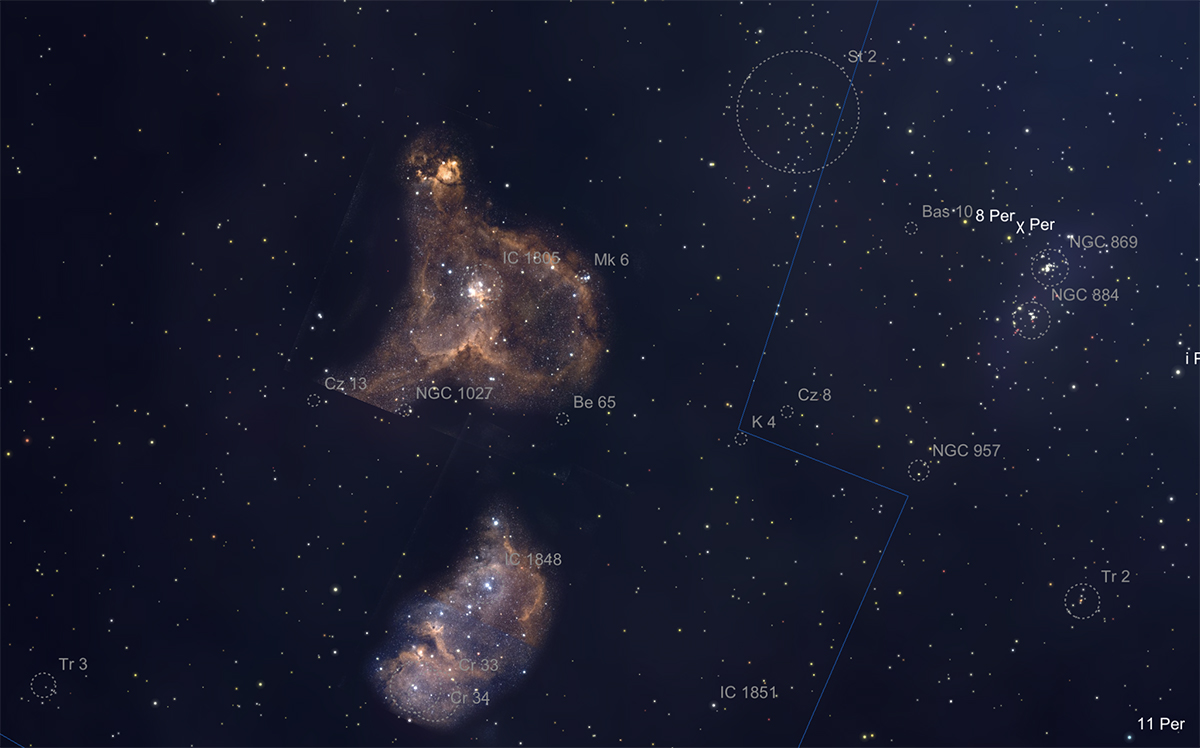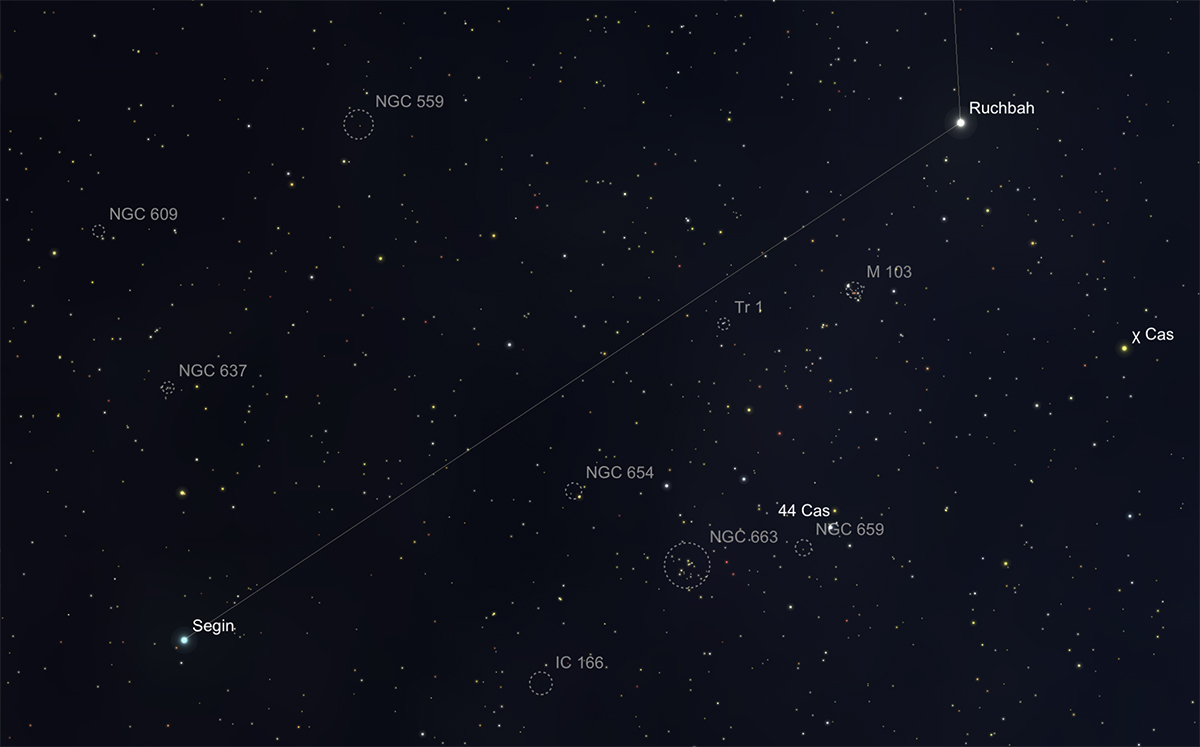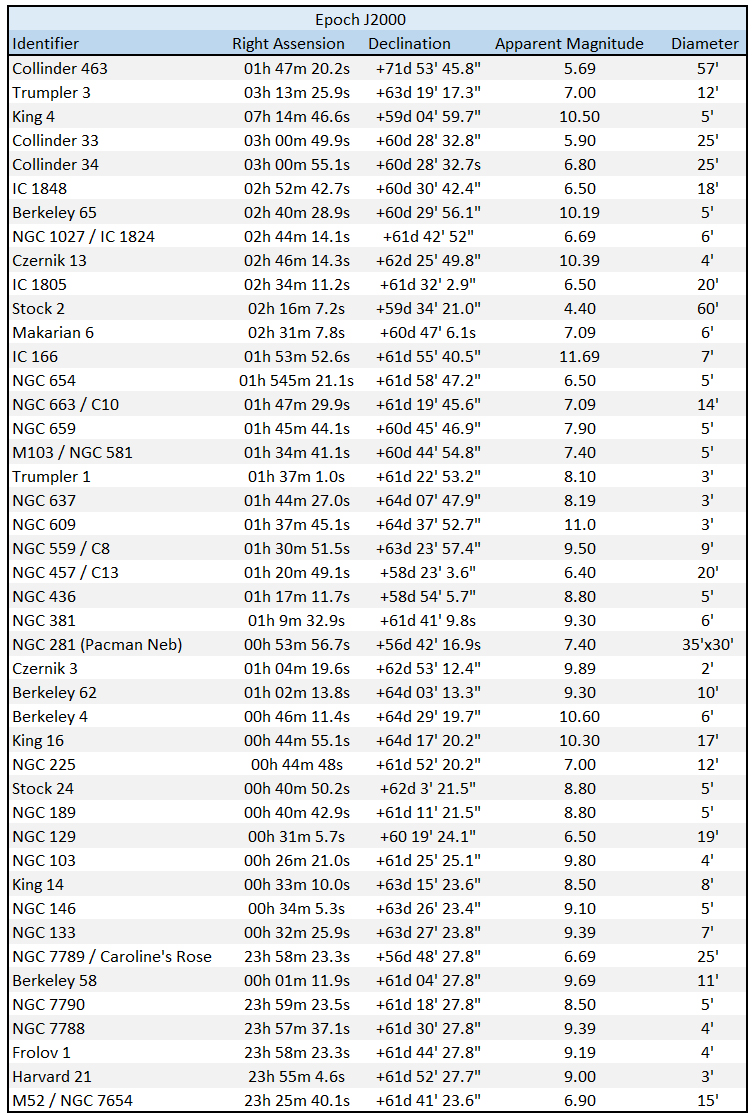While staying on Benguerra Island in Mozambique for my summer 2019 holiday, I undertook a little observing project to hunt down and view every globular cluster (GC) found in Ophiuchus (read the observing report here). Of the 150 or so known globular clusters, more than half are located in just three constellations, with Ophiuchus only bested by Sagittarius in number. Over a three-and-half hour session I managed to locate all 26 GCs, though a couple were beyond the capabilities of my 3” scope to show, but some photons from these ancient relics of the early universe were still striking my retina.
I posted a link to the observing report on the Facebook AstroCamp page suggesting this could be a good project for someone during the spring camp when the constellation is rising. However, it was asked if there was a similar project for the autumn camp. As far as GCs go, no probably not as most constellations contain a handful at most, and Sagittarius, Scorpius and Ophiuchus are not well placed at that time of year from Cwmdu.
I started to think about a similar observing challenge, and my mind turned to some of the younger DSOs in the heavens, Open Clusters (OC). There are more than 1,100 known OCs in the Milky Way, and many more hidden away from view by the dusty centre of our galaxy. Almost 10% of those OCs are located in queen of the night sky, Cassiopeia, a rather high concentration given the constellation is only 25th by area of the night sky.

Busy part of the sky! Showing only Open Clusters to mag +12 based on Sky Safari 5 data. Several clusters appear to have similar magnitudes but estimates are not available so they did not make the cut. Source: Sky Safari 5 Pro.
As more than 100 DSOs in a single session is pushing it, and many would be beyond the capabilities of the scope I would likely take AstroCamp, I decided to restrict my target list to all open clusters with a magnitude greater than +12, which reduced the goal to a more achievable 44 (based on Sky Safari 5 Pro database though some have unknown magnitude but would likely be in the specified range).
However, the autumn camp did not play ball with the weather, and as we all know, 2020 will be a year for the history books for the wrong reasons. However, my wife and I decided to take a staycation in September, renting a small cottage in Streatley in the Chiltern Hills, a rather pretty part of the world. It also benefits from a Bortle Class 4 sky. Even observing around the time of a 22-day old waning Moon, this is a substantial improvement from the Bortle Class 9 sky I live under in central London. So, this was the venue to attempt this latest observing challenge.
Observing Equipment
I decided to take my 5.1” APM LZOS 130 f/9.2 triplet apochromatic refractor for the trip away. The 130 was mounted on my simple alt-az Tele Optic Ercole. This was complimented with a number of eyepieces, the TeleVue 21mm Ethos (57x, 1.7o), the 17mm Nagler Type 4 (71x, 1.2o), the 10mm Delos (120x, 0.6o), the 4.5mm Delos (272x, 0.26o) and the Tele Vue 3-6mm Zoom (204x-408x, 0.24o – 0.12o). I also had my Tele Vue 2x Powermate which doubled the range of magnifications and fields.
The Challenge Begins
Astronomic dusk began at 9:30pm and I was ready to go as that moment arrived. The globular challenge in Ophiuchus took me around three and half hours to complete but only ran to 26 objects. Manually locating 44 OCs, and then taking the time to enjoy the view and select the best magnification would likely make this exercise run to 5 hours so there was no time to lose.
First up was Collinder 463. Starting from Gamma Camelopardalis, I placed it in the bottom quadrant of my finder which brought mag +4.8 HR 932 in the opposite quarter of the finder. Then swinging the scope further north but back to the east quickly revealed my target, surrounded by a trapezoid of 4 bright stars in the form of 50, 48, 42 and 40 Cass. While the 17mm Nagler contained the full extent of the 57’ wide cluster, I prefer the view with the 21mm Ethos which concentrated the sparse cluster. A sweeping curve of bright cluster members led to a boxy grouping of stars at one end which made me think of a mini Hyades, all overlaid on fainter stars. The loose grouping made it difficult to assess if some stars were true members or just field stars. This would certainly be a good binocular cluster.
My next target was Trumpler 3. I decided to hop off from Miram (Eta Persei), as the Tr3 is located just over a finder width west, but not before enjoying a quick look at this rather pretty colour contrasted double star which does a decent impression of Albireo. My eyes were immediately drawn to line of stars and a hook towards the centre, which was reminiscent of the most famous Collinder cluster (399), the coat hanger, which was best shown with the 10mm Delos.
Switching back to the 21mm and moving back to Miram, King 4 would be the first challenge of the night at mag +10.5. Less than two-field widths north was NGC 957, an OC inside the borders of Perseus. Placing this OC on the far edge of the field meant that K4 was near the opposite field stop. Thankfully it was easy to locate with that easy marker nearby, as otherwise I would have passed straight by it. With individual cluster members around mag +13, I struggled to make out much of interest other than a couple of cluster members with averted vision embedded in a hazy smudge using the 10mm.
The next three targets were all part of the Soul Nebula. Collinder 33 and 34 are both stated to be 25’ in diameter and somewhat overlap which made disentangling the respective cluster members impossible. What was seen in the eyepiece was a single cluster spanning approximately half a degree, with two perpendicular strings of bright stars emerging from a central rectangular grouping of stars. Moving less than a degree north-east brought IC1848 in to the field. This IC designation is often mis-associated with the Soul Nebula itself, but is in fact the open cluster. Within a central region of around 10’ a fairly rich hexagonal grouping of stars was seen with a couple of much brighter members really drawing the eye, surrounded by arcs of dimmer stars which extended to about 30’.
When you have not even heard of the catalogue before, it is unlikely that the target will be one to come back to time-and-time again, and that was certainly the case with Berkeley 65. Not much more than one 17mn field width north of IC1848, it was at least easy to locate this diminutive open cluster. Switching to the 10mm Delos, a ghostly apparition with two dim embedded stars was glimpsed. I did not linger on this one for long.
Fortunately, the next target was impressive enough to restore my faith that this was a worthwhile endeavour. NGC 1027 saw me skirt along the lower boundary of the Heart Nebula about 1.2o west. My eye was immediately drawn to the brightest star in the field, though it is just a foreground star, though it appears that the several dozen cluster stars are almost in random orbits around it, though I felt I could trace out an elongated “S” shape if I ignored the magnitude 7 interloper.
As quickly as this hobby gives, it can take away, and Czernik 13 certainly did that! Only three-quarters of a degree west of NGC1027, this tiny 4’ diameter cluster was no more than a smudge in the eyepiece, regardless of magnification used.
Fortuitously, the next OC was worth the one and two third degree hop north east. The OC shares the same catalogue IC (1805) as the Heart Nebula which formed it. Also known as Melotte 15, my immediate impression was of the top part of the constellation of Perseus (including Miram, Al Fakhbir, and Mirfak) which I had been using as a springboard to find some of the clusters earlier in the evening. Woven among these brighter members were many fainter companions which swept and arced around my imagine constellation lines.

Region around the Heart and Soul Nebulas which also includes one of my favourites of the night, Stock 2. Source: Sky Safari 5 Pro.
Next on my hit list was Stock 2, which was visible naked eye and an easy move of less than 3-degrees from IC1805. Definitely the highlight to this point, while it just fit in the field of the 17mm, I preferred the view in the 21mm which provided a frame of open sky around the 60’ diameter cluster. While not counting with precision, I estimate at least 70-80 stars contained with the 1-degree diameter of the cluster. This one deserves the diamonds scattered on black cloth description. A boxy shape to one side of the cluster appeared orbited by numerous fainter stars and another “Y” shaped grouping appeared to be drifting away from the main hub. Additionally, a couple more distant arcs of stars were also seen. Given the cluster’s proximity to the Double Cluster, it is possible I have scanned across St2 many times before, but this was the first time I targeted it. I am glad I did.
Heading back to where I just had observed, the small OC Markarian 6 sits on the edge of the Heart Nebula. In the 10mm, I felt like I was looking at Delphinus with the familiar diamond shape and tail that makes that small constellation so distinctive.
Moving up to the familiar “W” of Cassiopeia and using Segin as departure point, IC 166 was a 1/3 of a finder field east. Thankfully easy to locate as spotting its feeble +11.69 magnitude glow was not. Using the 10mm Delos, I positioned two magnitude 8 stars in the top quadrants of the field and a very tenuous glow was just about glimpsed using averted vision. The highlight of this view was in fact the two magnitude 8 stars, both of which had nearby companions, putting on a rather fine impression of the Double-Double in Lyra. I confirmed the identity of the two stars the next day as HD 10892 and HD 11004 with Sky Safari. Both are doubles, though the latter is separated by only 0.3” and I had seen a nearby unrelated star to create the illusion of one of Lyra’s showpieces.
Second stop along a tour that takes in six OCs running parallel along the 4.5-degree separation of Segin and Ruchbah is NGC 654. Only a degree north-east from IC 166, it was easy to locate. Using the 10mm, the impressive 7th magnitude yellow sun, and actual cluster member, anchors the cluster which seemed to have two distinct patterns of stars, a teardrop perpendicular to a “V” of stars, all overlaid on a milky haze which may be more unresolved cluster members or the backdrop of the Milky Way which this cluster rests against.
Moving two thirds of a degree southwest leaves one wondering why it does not have a Messier designation. NGC 663 is another impressive cluster in Cassiopeia’s repertoire and as a form of acknowledgement it does get a Caldwell number as C10. At 71x the core region of the cluster appears to have fragmented into three concentrations, with the delicate, unresolved light of dimmer siblings joining them in a “U” shape, with a more prominent halo of unresolved light to one side. The cluster also appeared bisected by a dark lane which flows up into the curve of the “U” and was quite conspicuous by its absence of light or stars.
When preparing this list, I perhaps unfairly assumed which clusters would be impressive and which would leave me a little underwhelmed, and from its stats, NGC 659 fell towards the latter. However, its +7.9 magnitude and quoted size of 5’ matches that of M103 which would be next on my hit list, and as Messier constructed a catalogue which is widely considered to be among the night sky’s greatest showpieces, I should always hold fire on a judgment. Shuffling only ½ a degree from how did Messier miss it NGC 663, at 120x, a concentrated irregular hexagon of stars immediately drew the eye, with two small streamers of equally bright stars peeling away from this central feature in opposite directions, all with a hazy mottled background of partially resolving cluster members.

The six open clusters below Segin and Ruchbah and the three immediately above. Source: Sky Safari 5 Pro.
Located just 1.3-degrees from NGC 659, made M103 an easy hop two field widths north in the 10mm Delos. Once considered a chance grouping of unrelated stars, it is now known to be a fairly loose open cluster with more than 170 members. 7th magnitude Struve 131 draws the eye at one end of the cluster but is an unrelated field star. The cluster itself looks like the head of an arrow with its prominent isosceles triangle shape.
Moving on to a cluster half the diameter of the previous two, Trumpler 1 is only 40’ west of M103. At 120x a small bar of equally bright stars was seen with a couple of dimmer attendant stars which may or may not be related to the cluster itself. The view was not improved with the 6mm setting of the zoom, other than opening up the empty space between the 4 stars that make up the bar, though seeing those 4 equal stars so close together was a pretty sight. Czernik 4 was also in the field of the 10mm but did not make my list as the magnitude is unknown and I only noticed it when reviewing star charts the next day.
Having swept up the 6 clusters below the line separating Segin and Ruchbah, I headed back to Segin and placed it at the bottom of the field of the 21mm which put NGC 637 at the top. This was a very small cluster and I used the 6mm setting on the zoom. Two distinct groups were seen. The brighter featured three stars in an equilateral triangle and the second fainter group was rhombus shaped. The triangle in particular sat on a bed of very faint light.
NGC 609 is only 52’ from NGC 637 so quick move north centred the next open cluster on my list. One of the faintest clusters on my list, a small circular patch of faint light was seen, and with averted vision I picked up some arcs of mottling pointing to some faint stars that were just beyond the reach of my scope.
Using the 21mm Ethos and placing NGC 609 on the field stop placed my next target on the opposite side of the eyepiece. Selected by Patrick Moore as the 8 entry in his Caldwell catalogue, NGC 559 warranted slightly higher magnification afforded by the 17mm. A central wedge shape of stars appeared to be surrounded by an oval of dimmer stars, creating the illusion of a knight’s shield with a embossed central coat of arms. Some unresolved starlight provided a metallic sheen for the shield.
Staying with Caldwell objects, the next target is in my opinion one of the best OCs to be found anywhere in the sky. Known by several names including the Owl Cluster, for me it was always be the E.T Cluster (perhaps showing which generation I belong to). As soon as I made the 2o hop east from Ruchbah using the 17mm, the impression was immediately of the eponymous character from Spielberg’s 1982 movie.
For part 2 of this observing challenge to view 44 OCs in Cassiopeia please click here.








Pingback: Observing all Open Clusters in Cassiopeia brighter than Magnitude 12 in a Single Session Part 2 | Alpha Lyrae
Pingback: Stargazing in Oldcroft in Gloucestershire